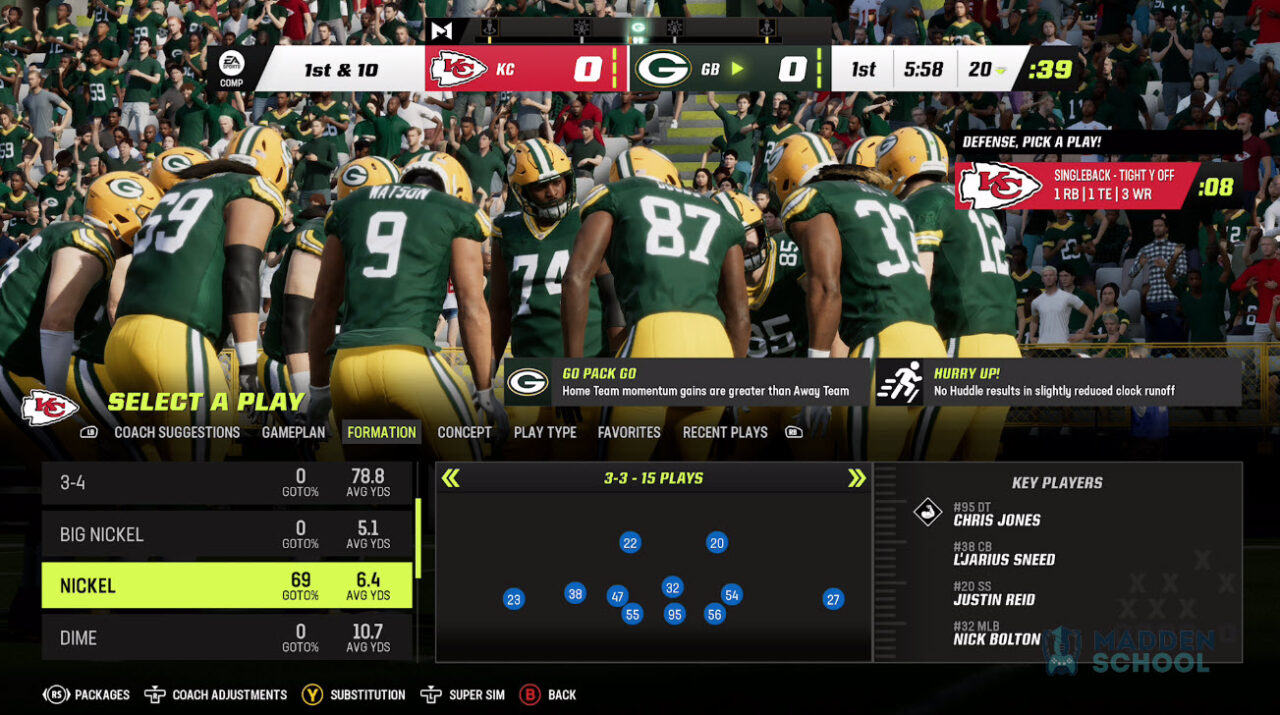In the competitive world of college football, having the right defensive strategy can make all the difference between victory and defeat. The NCAA 25 defense playbook stands out as an indispensable resource for coaches and players alike, offering comprehensive tactics that can be tailored to various playing styles. This playbook not only emphasizes strategic defensive formations but also provides insights into how to effectively read opponents, adapt to in-game scenarios, and optimize team performance. Understanding the nuances of the best defense playbook NCAA 25 can set aspiring teams apart, giving them the edge they need to dominate on the field.
As the game continues to evolve, so do the strategies and techniques employed by teams. The NCAA 25 playbook integrates modern football philosophies with time-tested principles, creating a robust framework for defensive success. With a mix of innovative plays and classic formations, this playbook equips teams to face diverse offensive styles, from high-powered passing attacks to ground-heavy offenses. Coaches who leverage the best defense playbook NCAA 25 will find themselves better prepared to counter any challenge thrown their way.
Moreover, the importance of communication and teamwork cannot be overstated in the realm of defense. The best defense playbook NCAA 25 emphasizes not only individual skills but also the synergy that exists between players. By fostering a culture of collaboration and understanding, teams can enhance their overall defensive execution, leading to more significant stops and turnovers. As we delve deeper into the intricacies of this playbook, it becomes evident that success in college football hinges on both strategy and cohesion.
What Makes the Best Defense Playbook NCAA 25 Stand Out?
The NCAA 25 defense playbook is designed to cater to various defensive schemes, making it adaptable for different coaching philosophies. Here are some standout features:
- In-depth coverage of defensive formations
- Strategies for countering various offensive styles
- Focus on player development and skill enhancement
- Insights into game-day adjustments
How Can Teams Effectively Implement This Playbook?
Implementing the best defense playbook NCAA 25 requires a structured approach. Here are steps that teams can take for effective integration:
- **Assess Current Defensive Strengths and Weaknesses**: Understand where your team stands before introducing new plays.
- **Introduce Plays Gradually**: Start with a few formations and build up as players become comfortable.
- **Focus on Communication**: Ensure that players are aware of their roles and responsibilities on each play.
- **Practice Regularly**: Repetition is key—frequent drills can help solidify the plays in players’ minds.
What Types of Defensive Formations Are Included?
The best defense playbook NCAA 25 offers a variety of defensive formations that teams can utilize based on their unique situations:
- **4-3 Defense**: A balanced approach with four defensive linemen and three linebackers.
- **3-4 Defense**: A versatile setup that allows for flexibility in player roles.
- **Nickel Defense**: Ideal for passing situations, adding an extra defensive back.
- **Dime Defense**: Focused on maximizing pass coverage with additional defensive backs.
Are There Specific Strategies for Different Game Situations?
Yes, the best defense playbook NCAA 25 includes tailored strategies for various game scenarios, such as:
- **Red Zone Defense**: Strategies to prevent touchdowns when the offense is close to scoring.
- **Two-Minute Drill**: Defensive tactics for late-game situations when time is limited.
- **Third Down Defense**: Plays designed to stop the offense from converting crucial third downs.
How Does Player Development Fit into the Best Defense Playbook NCAA 25?
Player development is a cornerstone of the best defense playbook NCAA 25. Coaches are encouraged to:
- **Identify Individual Strengths**: Tailor training focused on each player's unique skills.
- **Encourage Leadership**: Develop team leaders who can motivate and organize the defense.
- **Emphasize Film Study**: Utilize video analysis to help players learn from both successes and mistakes.
What Are the Common Mistakes to Avoid When Using This Playbook?
Even with a robust playbook, teams can falter if certain mistakes are made. Common pitfalls include:
- **Neglecting Fundamentals**: Failing to reinforce basic skills can lead to breakdowns.
- **Overcomplicating Plays**: Simple plays executed well often outperform complex ones poorly executed.
- **Ignoring Adaptation**: Sticking rigidly to the playbook without considering in-game adjustments can be detrimental.
Conclusion: Embracing the Best Defense Playbook NCAA 25
In conclusion, the best defense playbook NCAA 25 serves as a vital tool for any college football team striving for excellence. Its comprehensive approach to defensive strategy, player development, and situational tactics equips teams with the necessary tools to compete at the highest level. By understanding and implementing the principles outlined in this playbook, coaches and players can enhance their defensive performance and increase their chances of success on the field.
Is Dog The Bounty Hunter Still Alive In 2024? Unraveling The Mystery
Unveiling The Secrets Of Oscar Piastri's Twin Life
Unraveling The Life And Legacy Of Jill Tavelman


